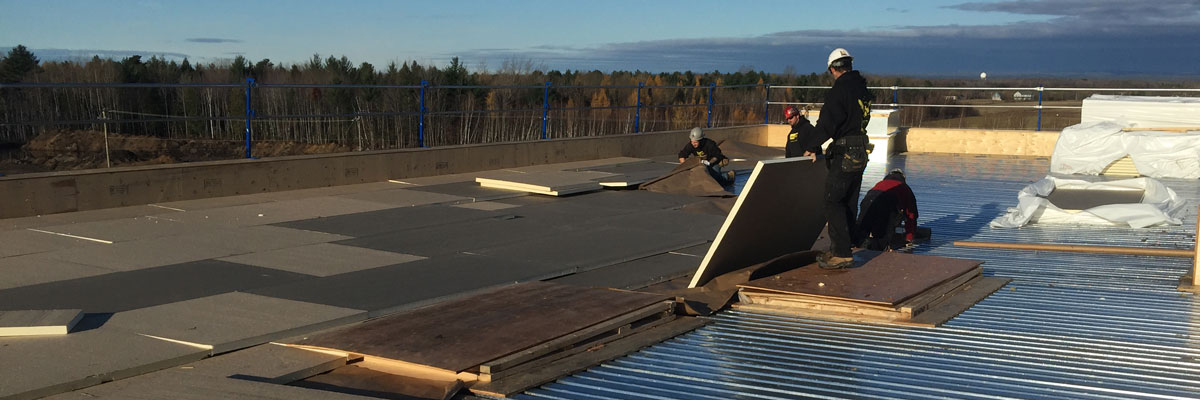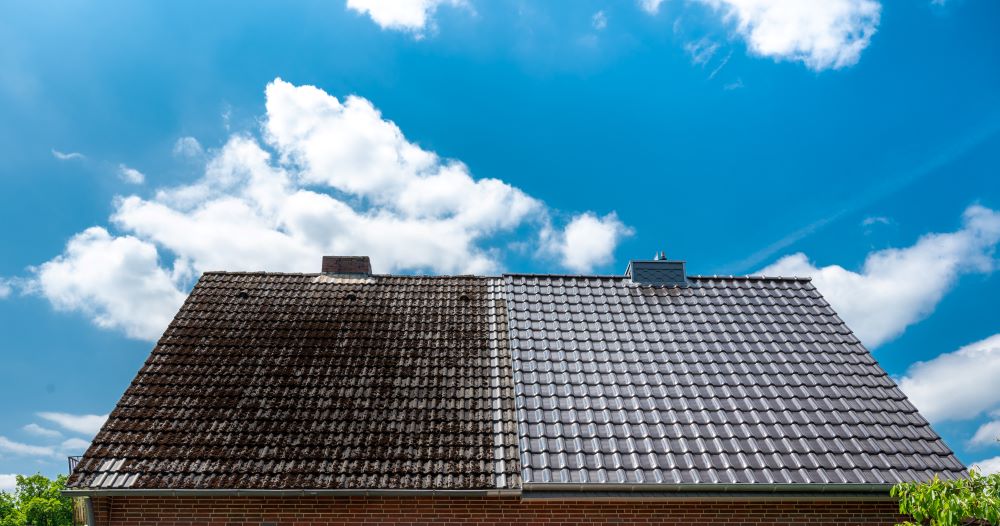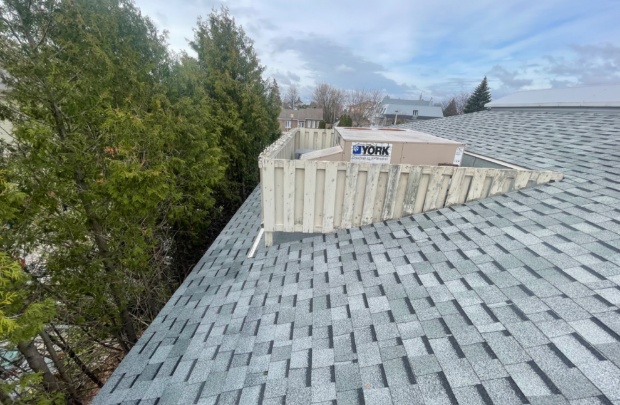Cathedral roofs are a popular choice for many consumers because of their beauty and their ability to make a room appear larger at first glance. The cathedral roof was very popular in Quebec in the 1960s, but many homes built at that time are now plagued by various problems due to neglect from previous owners.
To help shed light on the most confusing aspects of cathedral roof maintenance, design and insulation, our roof repair experts provide detailed answers to the most common questions about cathedral roofs. Get out your pen and paper and take notes!
Answers to frequently asked questions about cathedral roof insulation and ventilation
Why are heating costs so high with a cathedral roof?
A basic scientific principle is that warm air always tends to rise and stay high. The unique characteristics of houses with cathedral roofs cause the heat to be distributed unevenly inside. This inevitably increases the need for heating.
Is your home too hot in the summer? We have listed our best tips in our article on protecting your home from heat with roof ventilation.
How to reduce energy consumption and cut related costs
Good insulation is a must for your cathedral roof. We recommend installing high performance insulation in the attic in conjunction with a roof ventilation system. This will allow air to circulate more freely and reduce heat loss through proper insulation of your cathedral roof.
Is installing ceiling fans a cost-effective insulation solution?
A less expensive solution is to install ceiling fans. Our roof ventilation service can handle this if you live in the Greater Montreal area.
However, this alternative may not be effective in the long run, since it only helps ventilate the interior of the house, without addressing the vulnerability of a poorly ventilated or insulated cathedral roof. Professional roofing inspection is recommended to know if this option is cost-effective.
Why does ice build up at the bottom of the roof?
Pitched roofs (including cathedral roofs) are prone to snow accumulation. With a climate like Quebec’s, you need to be aware of the slightest excess that could cause damage to the structure of your home.
In fact, if you notice unusual build-ups, known as ice dams, there may be a problem with the waterproofing or insulation of your cathedral roof.
What are the signs of an ice-worn cathedral roof?
Frost, stains on the insulation, drips on the walls, mold or curling paint are all warning signs that your cathedral roof insulation is deteriorating.
Regular snow removal is important to be on the safe side. This will prevent the likelihood of major seepage. When you suspect the worst about the insulation of your cathedral roof, you should immediately consult an expert so that he can perform a complete inspection of the roof structure.
How to properly insulate a cathedral roof
If your cathedral roof is new, consulting an expert who can provide you with the latest roofing innovations is the key to ensuring that your entire system is properly insulated and will last for years to come. However, the task can be complex if you are renovating an older home.
Which material should I choose for a successful roof insulation?
The first step in achieving maximum waterproofing is to start with the roof. Next, the choice of materials is crucial. Wool is a relatively common choice of insulation, but it does not completely fill the space between the insulation and the roof trusses, which can lead to thermal bridges. In order to avoid this problem, sprayed polyurethane is the best choice.
What can be done to improve the insulation of a roof?
Here are several steps to consider if you want to improve the insulation of your cathedral roof:
- Properly seal areas at risk
- Install new panels
- Solidify the structure (if necessary)
- Install a suitable ventilator
- Choose a covering that meets the needs of the roof
Not all of these are feasible or cost-effective options. This is precisely why you should contact professional roofers. After inspecting the structure, they will know how to proceed and insulate your home properly.
What type of cladding should be installed on a cathedral roof?
There are various types of cladding available. Naturally, there are many things to consider before deciding on a particular product. Here are the main factors to consider:
- The look of your roof must of course be a priority to avoid clashing with the rest of the building.
- The durability and strength of the material should be taken into account. Painted or galvanized metal roofs have a life span of about 50 years!
- Eco-friendliness is a growing trend, so opt for recyclable materials!
- Finally, price is often a deciding factor for many consumers. This is why asphalt shingles are so popular, because they combine the last three aspects, in addition to contributing to the beauty of your home’s roof.
Do you have more questions or need advice on something other than cathedral roof insulation? Consult an expert roofer or contact the Duro-Toit team today!



